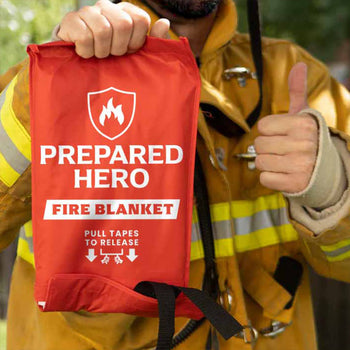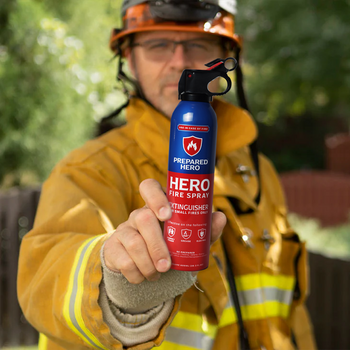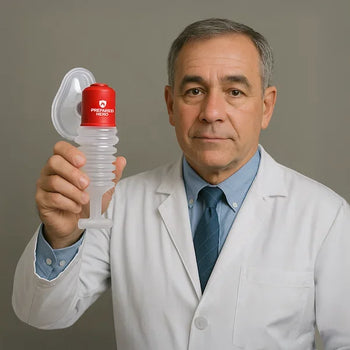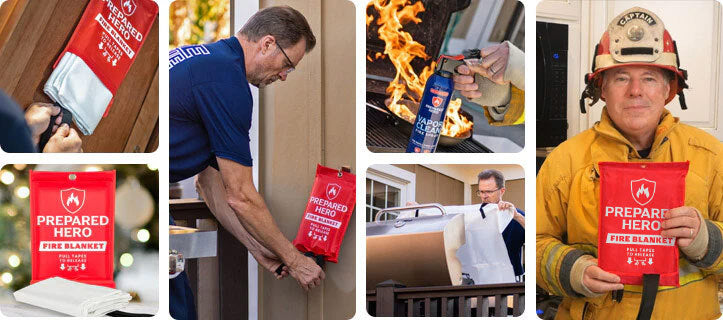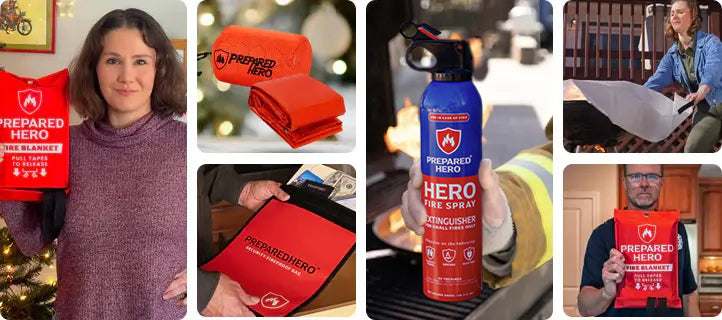Where you put your smoke detectors matters just as much as installing them. Proper placement makes sure they can detect...
Installing a dryer vent hose might not be the most exciting home project, but it’s a must. A proper vent setup keeps your dryer efficient, prevents mold, and reduces fire risks. The wrong hose can lead to lint buildup, poor airflow, and dryer fires.
This guide covers everything you need to know, whether you’re installing a new hose, replacing an old one, or making sure your setup is safe. We’ll also help you pick the right material.
What Is a Dryer Vent Hose?

A dryer vent hose is a flexible tube that connects your dryer to an exterior vent. Its main job is to push out hot, moist air from your dryer so your laundry room doesn’t turn into a sauna. Without it, all that heat and humidity would stay inside. This leads to mold, mildew, and potential fire risks.
Dryer vent hoses come in different materials, including semi-rigid metal, rigid metal, aluminum foil, and plastic (which you should never use because it’s a fire risk). Some hoses are flexible and easy to install, while others are more durable and work better in the long run.
A clogged or damaged vent hose can reduce your dryer's efficiency and cause Class C fires. That’s why it’s important to clean it regularly and make sure it’s properly installed. If you can’t vent your dryer outside, you might need a ventless dryer, which uses a different system to remove moisture. But for most setups, a vent hose is a must. Choosing the right one depends on your space, your dryer’s needs, and local building codes.
Types of Dryer Vent Hoses

Choosing the right dryer vent hose is more important than you might think. The wrong one can lead to lint buildup, poor airflow, and structure fires. There are many types to choose from, each with pros and cons. Whether you need something rigid, flexible, or space-saving, here’s what you should know before making a decision:
1. Rigid Metal Duct
Do you need a vent hose that runs through walls or floors? If yes, rigid metal ducts are the way to go. They are made of aluminum or galvanized steel and smooth inside. Rigid ducts also let air move freely while minimizing lint buildup.
Building codes usually allow rigid metal ducts to extend up to 35 feet, making them ideal for long runs. You also need to secure the joints with metal duct tape. Never use screws (which can catch lint) or regular plastic tape (which dries out and fails over time).
Pros
- Durable and long-lasting
- Ideal for long duct runs
- Smooth interior reduces lint buildup
Cons
- Expensive
- Can be tricky to install
-
Not flexible
2. Semi-Rigid Metal Duct
Semi-rigid metal ducts are usually made of aluminum. They’re a step up from flexible foil ducts. For one, they’re stronger. They also hold their shape better and don’t trap as much lint.
Semi-rigid metal ducts work best for short, exposed runs between the dryer and the wall vent. Just be careful not to crush them, or they’ll restrict airflow. You should also keep the tubing as short as possible to prevent bending and sagging.
Pros
- Easy to install
- Smoother interior traps less lint
- Inexpensive
Cons
- Can’t be hidden behind walls
- Only good for short runs
- Crushes easily
3. Aluminum Foil Duct
Aluminum foil ducts are lightweight and flexible, making them a popular option for short connections between the dryer and a rigid duct. They expand up to eight feet and are easy to install with clamps.
However, they tend to trap lint and can puncture easily, making them a potential fire hazard. You should also make sure that your local building codes and dryer manufacturer allow aluminum foil ducts before installing one.
Pros
- Affordable
- Flexible
- Easy to install
Cons
- Tears easily
- Collects lint
- Not allowed behind walls
4. Slim Duct
Slim or periscope ducts are adjustable metal tubes designed for tight spaces. They allow you to place your dryer closer to the wall, making them perfect for small laundry rooms.
Slim ducts are also often used in vertical, horizontal, or diagonal setups. However, installing them can be tricky. Some setups also require short sections of semi-rigid ducts for transitions.
Pros
- Saves space
- Hard to damage
- Keeps the dryer close to the wall
Cons
- Difficult to install
- More expensive
- Less airflow than rigid ducts
5. Plastic or Vinyl Duct
Plastic and vinyl ducts were once common but are now fire hazards. They can easily become clogged with lint, overheat, and catch fire. Many building codes have banned them, and you won’t find ones certified for dryer use. The bottom line is to avoid plastic or vinyl ducts entirely.
Why Do You Need a Dryer Vent Hose?

A dryer vent hose keeps your home free from excess moisture and toxins. If you own a dryer, proper venting isn’t optional; it’s a must. Here are the top reasons why you need a dryer vent hose:
1. Prevents Fires
Dryers produce a lot of heat and lint, which is highly flammable. A proper vent hose directs this heat and lint outside, reducing the risk of house fires. If the vent hose is clogged or missing, lint builds up inside the dryer and causes it to overheat. You can also keep a fire blanket, fire spray, and fire extinguisher near your dryer to put out fires before they become raging infernos.
2. Controls Moisture
Dryers pull water out of your clothes. That moisture needs to go somewhere. Without a vent, it stays in your home and leads to mold, mildew, and poor indoor air quality. If you’ve ever walked into a humid laundry room, you know how uncomfortable that can be. A dryer vent hose prevents this by keeping the moisture outside.
3. Prevents Carbon Monoxide Poisoning
Do you have a gas dryer? If yes, a vent hose is a must. Gas dryers release carbon monoxide, which is deadly if it builds up indoors. A proper venting system safely directs those fumes outside, making your home’s air safe to breathe.
4. Helps Your Dryer Work Better
A vent hose helps your dryer work more efficiently. Your clothes dry faster when hot, moist air is properly expelled. This also saves energy, reduces wear and tear on the machine, and lowers your utility bills.
How to Pick the Right Dryer Vent Hose

Picking the right dryer vent hose matters, but doesn’t have to be complicated. The right hose improves dryer efficiency, reduces fire risks, and helps prevent mold. Here’s what to consider when choosing the best one for your home:
1. Pick the Right Material
Dryer vent hoses come in different materials, but not all are safe or effective. Here’s a breakdown:
- Aluminum Foil Duct: Lightweight, flexible, and easy to install. It’s a common option but can crush easily and reduce airflow.
- Semi-Rigid Metal Duct: A stronger, more durable version of aluminum foil ducts. It resists crushing better, which improves airflow and safety.
- Rigid Metal Duct: The safest and most efficient choice. It has a smooth interior, which reduces lint buildup and fire risk. It’s usually the best choice for permanent installations.
- Slim Duct: A space-saving, telescoping aluminum duct designed for tight areas. It keeps the dryer close to the wall but can be tricky to install and may slightly restrict airflow.
- Plastic or Vinyl Duct: Cheap and flexible, but is a major fire hazard. Many building codes ban these, so it’s best to avoid them.
2. Think About the Length and Diameter
Most dryer vents are four inches in diameter. When it comes to length, shorter is better. Long or twisted hoses slow down airflow and trap lint. If you need a longer vent, go for a rigid or semi-rigid duct for better airflow.
3. Consider How Flexible and Durable It Is
Is your dryer close to an exterior wall? If yes, a rigid metal duct is the best option. However, a semi-rigid or flexible aluminum duct is better if you need to bend the hose. Just avoid sharp bends that restrict airflow and cause lint buildup.
4. Think About Fire Safety
Your dryer produces a lot of heat. A good vent hose reduces the risk of dryer fires. Look for certified vent hoses that meet safety standards. Avoid plastic or vinyl hoses because they can melt or catch fire.
5. Consider Maintenance
Some vent hoses trap more lint than others. Rigid metal ducts are the easiest to clean because they have a smooth interior. If you pick a flexible duct, clean it more often to prevent clogs.
How to Install a Dryer Vent Hose

Installing a dryer vent hose might seem tricky, but it's actually easy. Follow the steps below, and you’ll be done in no time.
What You'll Need
- Dryer vent hose
- Screwdriver or nut driver
- Foil tape
- Hose clamps
- Utility knife
- Measuring tape
1. Unplug the Dryer
Safety first! Unplug your dryer from the power source (or turn off the gas if you have a gas dryer). Carefully slide the dryer away from the wall to give yourself space to work.
2. Attach One End to the Dryer
Take one end of the vent hose and fit it over the dryer’s exhaust port. Make sure it’s snug to prevent leaks. Then, secure it with a hose clamp. Tighten it with a screwdriver or nut driver so it stays in place but not crushed. Be gentle if you’re using a flexible foil hose.
3. Connect the Other End
Stretch the vent hose toward the wall vent. Fit it over the opening and secure it with another hose clamp. If your hose is too long, trim it with a utility knife to avoid kinks or bends that restrict airflow.
4. Seal Them
Wrap foil tape around both connections to reinforce the seal and prevent air leaks. Don’t use duct tape because it doesn’t hold up well against heat and moisture.
5. Put the Dryer Back
Carefully slide the dryer back into place without crushing the hose. Plug the dryer back in (or turn on the gas). Then, run a short cycle to check the airflow. Step outside to make sure the air is vented properly.
That’s it! You’ve successfully installed your dryer vent hose. Keeping it clean and free from lint buildup will help maintain its efficiency and prevent fires. Find out how to clean your dryer vent here. Cleaning your dryer lint trap after each load also helps.
When to Call a Professional

Installing a dryer vent hose seems simple, but sometimes it’s best to let a pro handle it. If your dryer is close to an exterior wall, you can do it yourself. Just cut a 4.5-inch hole, attach the vent, and secure it properly.
But things get complicated if your dryer is in the middle of your home. Long vents have multiple bends that can restrict airflow and lead to lint buildup and fires. It’s best to call an expert if the vent needs to go through the roof, crawl space, or multiple floors. They have the tools and experience to make sure everything is up to code and working safely.
Another reason to call a pro? If you’re unsure about local building codes. Some areas have strict rules on vent materials and placement. A professional makes sure your setup meets safety standards, reduces fire risks, and improves dryer efficiency. When in doubt, save yourself the hassle and get an expert to do it right.
What Type of Dryer Vent Hose Is Best?

The best dryer vent hose is short, rigid, and made of metal, preferably aluminum or galvanized steel. A rigid metal duct lets air flow efficiently, reduces lint buildup, and helps prevent fires. If space is tight, a semi-rigid aluminum hose works, too. Avoid plastic or vinyl ducts because they can sag, trap lint, and start fires.
Make sure the hose is as short and straight as possible. Long, twisting ducts reduce airflow and make your dryer work harder. Make sure the hose fits tightly onto the vent and is secured with clamps. Remember, gaps or loose connections can leak hot air and lint.
Consider a periscope or slim duct if your dryer is in a tight spot. It’s a rigid, telescoping aluminum duct that saves space. Whatever you choose, clean the vent regularly to keep your dryer running safely and efficiently.
What Are the Rules for Dryer Vent Hose?

Keep your dryer vent hose short, straight, and made of metal. Aluminum or steel is the best. Avoid plastic or vinyl ducts since they trap lint and cause fires. Use rigid metal when possible, but a semi-rigid duct works if the space is tight.
Secure the hose tightly with clamps to prevent leaks. Make sure it vents outside, not into an attic or crawl space. Keep bends minimal to avoid airflow restrictions. The total length of the vent should not exceed 35 feet, with 2.5 feet deducted for each 45-degree bend and five feet for every 90-degree bend. Clean it regularly to prevent lint buildup and keep your dryer safe and efficient.
How Do I Tell if My Dryer Vent Is Clogged?

Your dryer will start acting up if the vent is clogged. First, your clothes will take forever to dry. The vent is also likely blocked if your dryer is heating and tumbling but still needs multiple cycles.
Another clue is condensation inside the dryer door or drum. If you see water droplets forming, the moisture isn’t escaping properly. Check your lint trap, too. If you’re getting little to no lint buildup after a cycle, poor airflow could be the issue.
Take a look at the vent hose behind your dryer as well. If you have a flexible duct, turn on the dryer and see if it slightly expands. If it stays compressed, airflow is blocked. Another major warning sign is water inside the vent hose. If you notice leaks or moisture pooling inside, the vent is likely so clogged that water vapor can’t escape and condenses inside. A clogged vent is a fire hazard, so if you notice these signs, clean it as soon as possible.
How Do You Fix a Dryer Vent Hose?

Fixing a dryer vent hose isn’t too complicated. However, you need to do it right to keep your dryer safe and efficient. First, unplug your dryer and move it away from the wall to make space. If the hose is disconnected, reattach it to the dryer and vent opening and secure it with a clamp and foil duct tape.
If the hose is crushed, straighten it out so air can flow freely. If it's torn, get a replacement. Remove the damaged hose by loosening the clamps. Then, attach the new one with foil tape and secure it with clamps.
If the hose is too long, trim it to about six inches longer than needed to prevent crumpling. If it’s clogged, disconnect it, remove the lint, and check for blockages in the vent.
Conclusion
A proper dryer vent hose keeps your dryer safe and efficient. Choose the right type, install it correctly, and keep it clean to prevent fires and moisture problems. Check the vent if your dryer feels too hot or takes too long to dry your clothes. Remember, a little maintenance goes a long way in keeping your home safe. When in doubt, call a pro to make sure everything is up to code.
Do you want reliable, easy-to-use, and affordable tools to put out dryer fires before they spread? Check out Prepared Hero’s fire prevention tools here, and get up to 51% off on certain items. Stay prepared, hero!


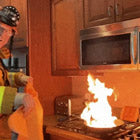 Fire
Fire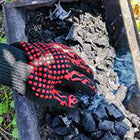 Safety
Safety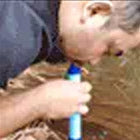 Survival
Survival Protection
Protection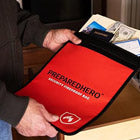 New
New
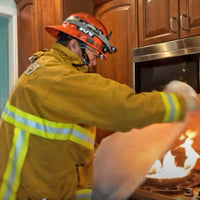 Fire
Fire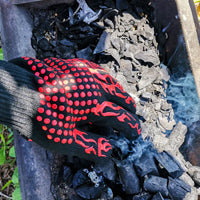 Safety
Safety Survival
Survival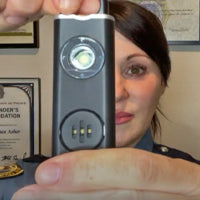 Protection
Protection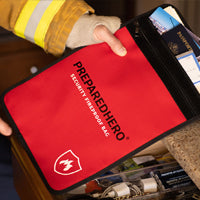 New
New
